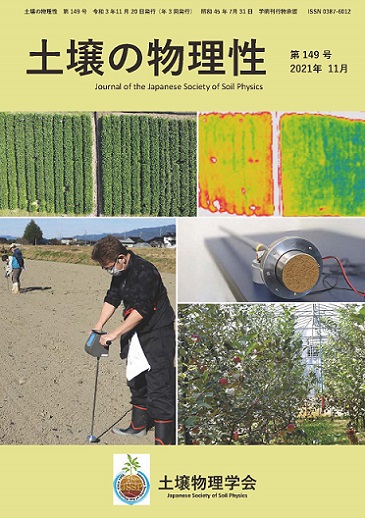Volume 149
Displaying 1-14 of 14 articles from this issue
- |<
- <
- 1
- >
- >|
-
2021Volume 149 Pages 1-2
Published: 2021
Released on J-STAGE: January 20, 2022
Download PDF (508K) -
2021Volume 149 Pages 3-12
Published: 2021
Released on J-STAGE: January 20, 2022
Download PDF (746K) -
2021Volume 149 Pages 13-21
Published: 2021
Released on J-STAGE: January 20, 2022
Download PDF (870K) -
2021Volume 149 Pages 23-35
Published: 2021
Released on J-STAGE: January 20, 2022
Download PDF (3039K) -
2021Volume 149 Pages 37-46
Published: 2021
Released on J-STAGE: January 20, 2022
Download PDF (3092K) -
2021Volume 149 Pages 47-53
Published: 2021
Released on J-STAGE: January 20, 2022
Download PDF (4050K) -
2021Volume 149 Pages 55-61
Published: 2021
Released on J-STAGE: January 20, 2022
Download PDF (2478K) -
2021Volume 149 Pages 63-68
Published: 2021
Released on J-STAGE: January 20, 2022
Download PDF (2454K) -
2021Volume 149 Pages 69-72
Published: 2021
Released on J-STAGE: January 20, 2022
Download PDF (1509K) -
2021Volume 149 Pages 73-75
Published: 2021
Released on J-STAGE: January 20, 2022
Download PDF (521K) -
2021Volume 149 Pages 77-79
Published: 2021
Released on J-STAGE: January 20, 2022
Download PDF (464K) -
2021Volume 149 Pages 81-82
Published: 2021
Released on J-STAGE: January 20, 2022
Download PDF (1161K) -
2021Volume 149 Pages 83-85
Published: 2021
Released on J-STAGE: January 20, 2022
Download PDF (1038K) -
2021Volume 149 Pages 92
Published: 2021
Released on J-STAGE: January 20, 2022
Download PDF (130K)
- |<
- <
- 1
- >
- >|
